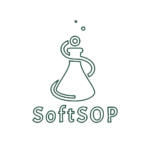Food safety is the foundation of consumer trust, regulatory compliance, and business continuity in the food industry. One of the most effective tools to safeguard product integrity and meet both regulatory and certification standards is the food safety audit. These audits, when led strategically by the Food Safety Department, ensure that every part of the facility operates in line with food safety programs, quality procedures, and industry benchmarks.
The Role of the Food Safety Department in Audits
The Food Safety Department plays a central role in planning, coordinating, and overseeing all audits within the facility. Its responsibilities extend beyond compliance checks—it also serves as a driver of continuous improvement. Specifically, the department is tasked with:
- Developing an Audit Schedule: Creating a structured timeline that ensures audits are carried out consistently and thoroughly.
- Identifying Departments/Areas to Audit: Targeting all key operational areas, such as production, sanitation, maintenance, storage, and quality assurance, for monthly review.
- Determining Audit Dates and Timeframes: Exercising discretion to set audit timelines, ensuring flexibility to address operational needs while maintaining compliance requirements.
This structured approach ensures that no department is overlooked and that audits are conducted with both consistency and accountability.
Monthly Audits for Every Department
According to food safety best practices, every department or designated area within a plant should undergo an internal audit at least once per month. This frequency ensures that any gaps or non-conformities are detected early, corrective actions are implemented promptly, and preventive measures are reinforced.
Departments commonly included in the monthly audit schedule are:
- Production: Evaluating adherence to Good Manufacturing Practices (GMPs), hygiene, and equipment sanitation.
- Sanitation: Reviewing cleaning schedules, chemical handling, and effectiveness of sanitation procedures.
- Quality Control: Verifying testing protocols, documentation, and record-keeping systems.
- Maintenance: Inspecting calibration, preventive maintenance schedules, and equipment compliance.
- Warehousing & Distribution: Checking storage conditions, traceability, and pest control measures.
By assigning each department its own audit cycle, the Food Safety Department creates a comprehensive system of accountability across the entire organization.
Benefits of Departmental Food Safety Audits
- Regulatory Compliance: Aligns with requirements set by the USDA (United States Department of Agriculture), FDA (Food and Drug Administration), and CFR (Code of Federal Regulations).
- Certification Readiness: Supports global standards such as ISO 22000, SQF, BRCGS, and AIB International by ensuring document control, traceability, and preventive systems are in place.
- Early Hazard Identification: Detects risks before they escalate into safety issues or product recalls.
- Continuous Improvement: Provides data-driven insights to improve operational efficiency, training, and safety culture.
- Audit Preparedness: Ensures the facility is always “audit-ready” for third-party inspections, including Siliker audits and GFSI-recognized certifications.
Building a Culture of Food Safety Through Audits
Food safety audits are not just about passing inspections—they are about building a culture where every employee and department takes ownership of compliance. By involving managers in monthly audits, organizations ensure that accountability is distributed and food safety becomes part of daily operations rather than a reactive response to external inspections.
The Food Safety Department’s leadership in audit planning and execution reinforces this culture, demonstrating that food safety is not a one-time event but an ongoing responsibility.
Conclusion
A structured and consistent food safety audit program, led by the Food Safety Department, is a powerful tool to safeguard product integrity, ensure compliance with regulatory and certification requirements, and foster a culture of accountability. By developing an audit schedule, identifying key departments, and conducting monthly reviews, organizations position themselves for long-term success in the global food marketplace.
References
- U.S. Food and Drug Administration. “21 CFR Part 117 – Current Good Manufacturing Practice, Hazard Analysis, and Risk-Based Preventive Controls for Human Food.” FDA, www.fda.gov.
- United States Department of Agriculture (USDA). “Food Safety and Inspection Service (FSIS) Compliance Guidelines.” www.usda.gov.
- International Organization for Standardization. “ISO 22000:2018 Food Safety Management Systems.” ISO, www.iso.org.
- Safe Quality Food Institute. “SQF Code, Edition 9.” www.sqfi.com.
- BRCGS. “Global Standard for Food Safety.” www.brcgs.com.
- AIB International. “Food Safety and Quality Audits.” www.aibinternational.com.
- Siliker Laboratories. “Food Safety Auditing Programs.” www.siliker.com.

